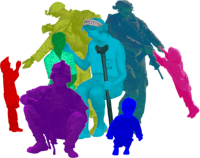Sexual exploitation and forced labor are critical issues that affect millions globally. These forms of human trafficking are not only violations of human rights but also have profound social, economic, and psychological impacts on victims. This page aims to provide a comprehensive overview of these categories, their prevalence, and the mechanisms through which they operate.
Forms of Sexual Exploitation
Sexual exploitation encompasses various forms of abuse where individuals are coerced into sexual acts for profit or gain. The primary categories include:
Commercial Sexual Exploitation (CSE)
This includes prostitution, pornography, and sex trafficking. Victims are often manipulated or forced into these situations through violence, threats, or deceit. According to the International Labour Organization (ILO), an estimated 4.8 million people are trapped in forced sexual exploitation globally.
Child Sexual Exploitation
Children are particularly vulnerable to sexual exploitation due to their age and lack of resources. This can occur through child prostitution, child pornography, or online exploitation. The United Nations Children’s Fund (UNICEF) reports that millions of children worldwide are victims of sexual exploitation.
Sex Trafficking
This involves the recruitment, harboring, transportation, provision, or obtaining of a person for commercial sex acts through force, fraud, or coercion. The U.S. Department of State’s Trafficking in Persons Report indicates that sex trafficking is prevalent in many countries and often intersects with other forms of exploitation.
Online Exploitation
With the rise of the internet, online sexual exploitation has become increasingly common. This includes grooming by predators and the distribution of child sexual abuse material (CSAM). Reports from organizations like Thorn highlight the alarming rates at which children are targeted online.
Forms of Forced Labor
Forced labor refers to situations where individuals are compelled to work against their will under threat of punishment or coercion. Key aspects include:
Labor Trafficking
This form involves recruiting individuals through force or deception for work in various sectors such as agriculture, construction, domestic work, and manufacturing. The ILO estimates that there are approximately 25 million victims of forced labor worldwide.
Debt Bondage
Often seen in migrant labor scenarios, debt bondage occurs when workers are forced to repay a debt with their labor under exploitative conditions that make it impossible to pay off the debt fully.
Child Labor
Many children around the world engage in hazardous work that interferes with their education and development due to poverty or family circumstances. The ILO estimates that 152 million children are engaged in child labor globally.
Domestic Servitude
Individuals—often women and girls—are subjected to forced labor within private households where they may face physical abuse and isolation from the outside world.
Exploitation in Supply Chains
Many industries rely on complex supply chains where forced labor can be hidden within layers of subcontractors and suppliers. Reports from organizations like Human Rights Watch emphasize the need for transparency in supply chains to combat this issue effectively.
Addressing sexual exploitation and forced labor requires a multifaceted approach involving awareness-raising campaigns, legal reforms, victim support services, and international cooperation among governments and NGOs. By understanding these issues more deeply through statistics and real-life implications, we can better advocate for change and support those affected by these heinous crimes.
